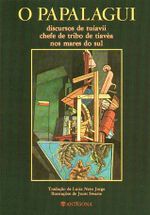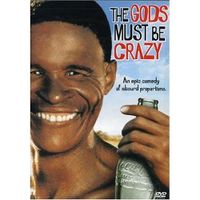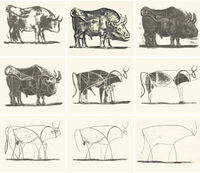2nd Exercise - three objects: Difference between revisions
No edit summary |
No edit summary |
||
| (8 intermediate revisions by the same user not shown) | |||
| Line 1: | Line 1: | ||
[[File:11100687.jpg|150px|thumb|right]] | |||
=== The book=== | === The book=== | ||
a book by Erich Scheurmann (de) published in Germany in 1920. | |||
This book reveals the reflections of Tuiavii, an arborigene cheef from Tiavéa in the island of Upolu, located in the South Pacific Ocean, when first traveled to Europe at the turn of the 20th century. Scheurmann, collects and presents his commentaries condemning the very foundations of Western society. " | |||
''Keywords:'' simplicity / truth / essence / human nature / “modernism” / progress / technology & society; | |||
=== The film=== | |||
"Gods must be crazy" is a South African comedy film written and directed by Jamie Uys, in 1980. In this movie two distinct realities are presented: the aboriginal world of Kalahari desert in Southern Africa ; in contrast with technologically-superior culture of the modern world. + The narrative of the film evolves around an empty coca-cola bottle. | |||
''Keywords:'' global culture / “modernism”/ progress / human nature / technology & society; | |||
[[File:38601004f14d0c89bd7bed0363ac9194.jpg|200px|thumb|right]] | |||
=== The art piece=== | === The art piece=== | ||
the Bull, 1946, lithographic ink, by Pablo Picasso. Part of a range of experimentation with ideas, techniques and materials- in this series of prints, the artist progressively reduces the image of a bull to a simple outline. During this process of deconstruction, details are rejected in each new print, until the final image that aims to represent the absolute essence of the "bull". More than a final statement this works presents a visual analysis of the the concept of a bull. >>> like when categorizing species. | |||
+ prehistoric art / cave paintings | |||
+ logo design - drawing a concise shape of a complex idea. | |||
''Keywords:'' simplicity/ essence / progress / nature; | |||
[[File:PicassosBullSeries.jpg|200px|thumb|right]] | |||
__________ | |||
<big>Connecting links (further research): | |||
</big> | |||
Operating Manual For Spaceship Earth, by Richard Buckminster Fuller, 1969 | |||
Steps to an Ecology of Mind, by Gregory Bateson, 1972 | |||
Fundamentals of Ecology, by P.Odum, 1953 | |||
http://thoughtmaybe.com/all-watched-over-by-machines-of-loving-grace/ | |||
http://www.darkecology.net/field-notes/dark-ecology-reading-list | |||
http://www.eoearth.org/view/article/150125/ (antropocene) | |||
http://www.hkw.de/en/programm/projekte/2014/anthropozaen/anthropozaen_2013_2014.php | |||
'''case study:''' James Cameron's Avatar | |||
The “Double Mirror” in James Cameron’s “Avatar” – Philosophy, Ecology, Ideology 25 and Ontology on Pandora | |||
Latest revision as of 17:59, 9 October 2014
The book
a book by Erich Scheurmann (de) published in Germany in 1920. This book reveals the reflections of Tuiavii, an arborigene cheef from Tiavéa in the island of Upolu, located in the South Pacific Ocean, when first traveled to Europe at the turn of the 20th century. Scheurmann, collects and presents his commentaries condemning the very foundations of Western society. " Keywords: simplicity / truth / essence / human nature / “modernism” / progress / technology & society;
The film
"Gods must be crazy" is a South African comedy film written and directed by Jamie Uys, in 1980. In this movie two distinct realities are presented: the aboriginal world of Kalahari desert in Southern Africa ; in contrast with technologically-superior culture of the modern world. + The narrative of the film evolves around an empty coca-cola bottle.
Keywords: global culture / “modernism”/ progress / human nature / technology & society;
The art piece
the Bull, 1946, lithographic ink, by Pablo Picasso. Part of a range of experimentation with ideas, techniques and materials- in this series of prints, the artist progressively reduces the image of a bull to a simple outline. During this process of deconstruction, details are rejected in each new print, until the final image that aims to represent the absolute essence of the "bull". More than a final statement this works presents a visual analysis of the the concept of a bull. >>> like when categorizing species.
+ prehistoric art / cave paintings + logo design - drawing a concise shape of a complex idea.
Keywords: simplicity/ essence / progress / nature;
__________
Connecting links (further research): Operating Manual For Spaceship Earth, by Richard Buckminster Fuller, 1969 Steps to an Ecology of Mind, by Gregory Bateson, 1972 Fundamentals of Ecology, by P.Odum, 1953
http://thoughtmaybe.com/all-watched-over-by-machines-of-loving-grace/
http://www.darkecology.net/field-notes/dark-ecology-reading-list
http://www.eoearth.org/view/article/150125/ (antropocene) http://www.hkw.de/en/programm/projekte/2014/anthropozaen/anthropozaen_2013_2014.php
case study: James Cameron's Avatar
The “Double Mirror” in James Cameron’s “Avatar” – Philosophy, Ecology, Ideology 25 and Ontology on Pandora



